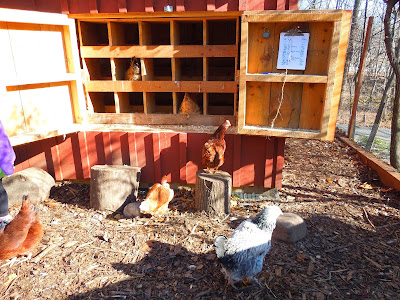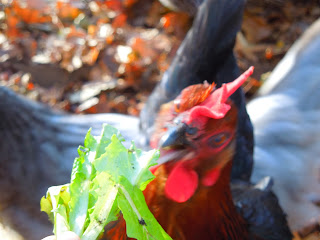The definition of mellow in the dictionary is soft and rich, as sound, lights, or colors. There are more meanings but this is the one I'm focused on. Another good one would be: having the gentleness, wisdom, or tolerance often characteristic of maturity. And from the outside, these two definitions would perfectly describe the sound, look, and characteristics of dear little Mellow the Silkie. But ever since the baby chicks arrived, Mellow has started to show her true personality.
 |
| Isn't Mellow such a cutie, with that small poofy crest and her fluffy cheeks? |
Now, let me explain. Today while Charcoal lay calmly on the ground basking in the sun, Mellow walked over to enjoy the warmth as well. As she came closer, her large, round, black eyes caught the sight of Charcoal. Mellow advanced, with snake-like grace. Her eyes and face no longer bore the look of childish innocence; the crest perched atop her head had somehow become smaller and narrower, and her neck stretched out high with authority.
I have seen Mellow act like this towards the rest of the flock in the exact same way, and when she gets close enough (to her so called "offender") she lowers the wing on the same side as the flock member who she intends on attacking. It looked so similar to a rooster's mating dance, that the first time I saw her do that I almost believed she was a cockerel! One of the differences is that she doesn't extend her other wing and drag it on the ground.
 |
| It's kind of hard to see in this picture (mostly because Charcoal's head is in the way), but Mellow is pointing her right wing down towards Charcoal, intending on bumping her. |
 |
| Here, Mellow is bumping Charcoal. |
When Mellow got nearer to Charcoal's face, she turned and grabbed Charcoal's comb, twisting it. Poor Charcoal had no choice but to surrender to the punishment that she did not deserve. She stood there frozen for a few second then went off, and certainly far away from mean Mellow.
 |
| With her puffed up chest, Mellow tries to peck Charcoal's comb. |



































































